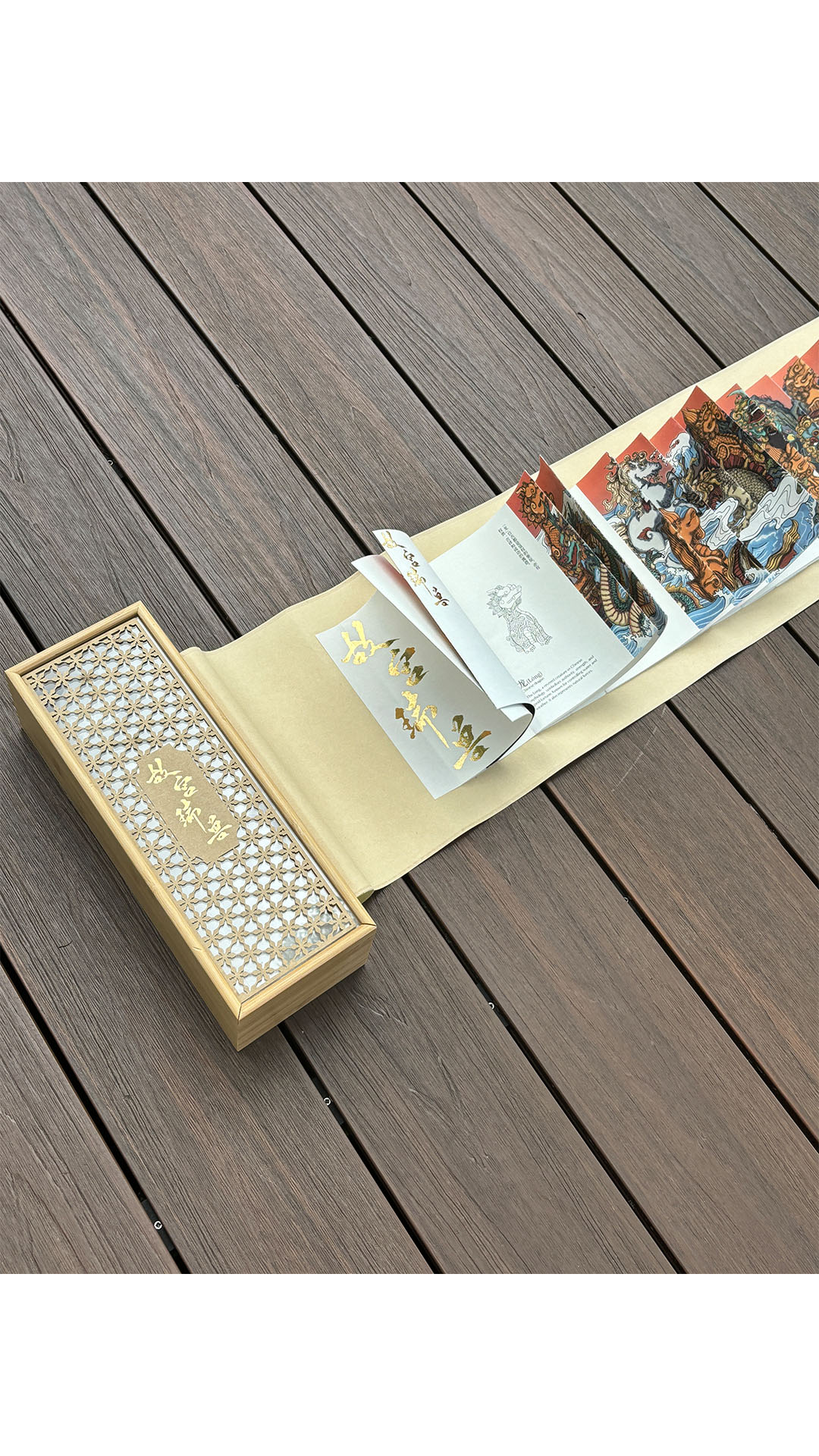
Sunny Chen
RuiShou in Forbidden City
RUISHOU in Forbbiden City
The project investigates how visual design celebrates and preserves the cultural heritage of Chinese mythology that reimagines the mythical creature (Ruishou瑞兽) from the Forbidden City. By integrating the Chinese architectural context, bronze statues, and visual storytelling, the project aims to make ancient stories accessible and engaging for modern audiences. Dragon Scale Binding, an ancient bookbinding technique, is used to enhance the tactile and visual experience, emphasizing the cultural continuity of traditional crafts. Using Xuan paper and bamboo packaging further reinforces the connection to Chinese cultural materials. Contextual research on Chinese mythology, mythical creatures, and young people’s growing interest in traditional culture informed the design choices. The significance is to celebrate and preserve the cultural heritage of Chinese mythology. By using mythological narratives and symbolic imagery, the project provides a new lens for appreciating traditional culture in today.
Traditional Chinese mythology, rich with symbolism and cultural significance, is an important part of Chinese heritage. This project aims to attract younger audiences by reimagining mythical creatures from the Forbidden City using modern design techniques, making these cultural elements accessible and engaging.
In the first chapter, I discuss my personal relevance to the chosen theme and set the foundation for the project. And also about the cultural and design motivations behind reimagining the mythical creatures of the Forbidden City. The second chapter explores academic resources related to Chinese mythology, the mythical creatures of the Forbidden City, and modern Chinese artists whose works inspire me. It establishes the cultural and historical context for the design process. In chapter three, I articulate the methodologies utilized on the project, such as material and technique selection, and design processes like Dragon Scale Binding, visual storytelling, and prototyping. Chapter four is a critical commentary that scrutinizes design decisions adopted during the project. I analyze the concept, techniques, color, and format in this chapter. And reflect on how these elements address the initial design problem and effectively engage the target audience.

